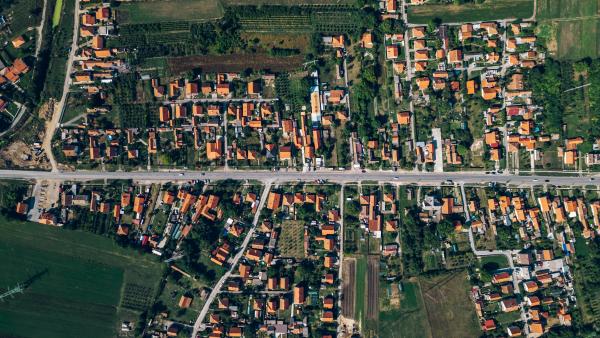This project provides a Guide to assist urban planners, developers, designers, land managers and policy decision-makers to assess the microclimate of development areas and mitigate existing and future urban heat and cold through appropriate urban design and planning considerations.
Project summary
Urban populations are growing globally and Australia is one of the most urbanised countries. Urban microclimates can become compromised in high density areas such as CBDs and residential areas where densification and sprawl reduce green space and increase localised heating, a process known as the urban heat island effect. This impacts the environment, society and the economy through heat-related deaths, air pollution, increased water consumption, energy use and greenhouse gas emissions. Heat stress reduces urban liveability and these impacts are being exacerbated by climate change.
Australia has warmed 1.44 ± 0.24 °C since records began in 1910, with most warming occurring since 1950, with every decade since being warmer than the one before.
Heatwaves and hot days impact health and wellbeing, settlements and infrastructure, disaster and emergency management and natural resources and ecosystems.
Researchers at UTS have developed a Guide to provide information on the where, when, who, why and how of microclimate assessments and what can be done to mitigate the negative impacts of urban heat and cold stresses. The Guide for the city of Canberra in the ACT, provides information at the suburb to city-wide scale, precinct scale and Lot, or single building scale.
Microclimates are influenced by local air temperature, surface temperature of the ground, buildings and vegetation, wind speed, humidity, and solar exposure. The urban heat island effect is exacerbated by factors such as;
Dark surfaces such as bitumen on roads and building materials absorbing and emitting heat.
Lack of shade and high sun exposure, with street and building orientation contributing to hot spots.
Lack of vegetation and surface water reducing shading and evaporative cooling.
Heat from air conditioning, industry, traffic, and people.
Understanding these variables, and the management options available to help, can improve urban liveability.
This Guide provides information on why microclimate assessments should be undertaken, who should and can perform them, interventions and management options, along with potential improvements and benefits. The Guide provides information on microclimate assessment for each development phase. Information on managing microclimates, and management options for each scale. Information and management interventions that mitigate the urban heat island effect can help cities and communities better adapt to some of the impacts of climate change.
Project timeframe
2019 – 2020
SDG targets addressed by this project
Sustainable cities and communities:
11.3 - By 2030, enhance inclusive and sustainable urbanization and capacity for participatory, integrated and sustainable human settlement planning and management in all countries.
11.b - By 2020, substantially increase the number of cities and human settlements adopting and implementing integrated policies and plans towards inclusion, resource efficiency, mitigation and adaptation to climate change, resilience to disasters, and develop and implement, in line with the Sendai Framework for Disaster Risk Reduction 2015-2030, holistic disaster risk management at all levels.
Climate action:
13.1 - Strengthen resilience and adaptive capacity to climate-related hazards and natural disasters in all countries.
-
Professor, School of Built Environment
-
Key collaborators
- Stephanie Jacobs, Alluvium Consulting
- Jan Orton Alluvium, Alluvium Consulting
- Kristen Whiting Alluvium, Alluvium Consulting




